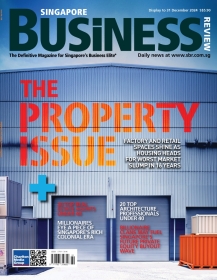
Will the Singapore economy get better or worse next year?
Guess which sector will provide temporary relief.
Is Singapore economy improving after it slipped a technical recession in the third quarter?
Yes but muted, analysts said.
Here are the numbers: The Ministry of Trade and Industry revised Q3 growth figures showed the economy grew 1.9% in the months of July to over the same period a year ago - higher than its earlier estimate of 1.4%. The growth was supported mainly by services industries, as the manufacturing sector continued to falter. Manufacturing, which comprises a fifth of Singapore's economy, contracted 6.2% QoQ.
Here’s what analysts had to say regarding the latest figures:
Andrew Wood, Head of Asia Country Risk Research, BMI Research
We see little prospect for a significant recovery in Singapore's export growth over the coming year amid poor external demand conditions and ongoing domestic structural difficulties. In line with our expectations for lacklustre real export growth in 2016 (2.2%), we have downgraded our 2015 real GDP forecast to 2.3%, from 2.5% previously. That said, we retain our view that Singapore's underlying economic fundamentals will remain robust as characterised by a healthy labour market and robust real wage growth. Singapore's non-oil domestic exports (NODX) fell back into contraction in October, slipping by 0.5% year-on-year (y-o-y) versus a minor expansion of 0.3% of September. As we have highlighted previously, Singapore is facing both a cyclical slowdown in global trade as well as structural domestic difficulties, both of which have acted as a drag on non-oil domestic exports (NODX) and industrial production. Reflecting this difficult outlook, industrial production growth sank to a fresh three-year low of -5.3% y-o-y in October, suggesting that manufacturers continue to struggle in the face of the myriad headwinds
Carmen Lee, analyst, OCBC Investment Research
The near- term outlook remains one of weakness in manufacturing, especially electronics and transport engineering due to tepid external demand conditions. In comparison, the domestic-oriented services segment should still expand at a moderate pace. This segment can be divided into essential services (e.g. healthcare, education and telecommunication), and more cyclically-sensitive sectors (e.g. retail trade, construction, and financial & business services).
Essential domestic services will be lifted by increased government expenditure in the healthcare and education sectors. Conversely, the cyclically-sensitive sectors could witness some moderation in the quarters ahead, particularly in property-related sectors.
For 2016, the uplift is expected to come from a firmer US economy but tempered by weaker growth prospects in the region. On this, OCBC Treasury Research and Strategy expects Singapore’s GDP growth to be around 2-3% next year.
Yeo Kee Yan, analyst, DBS Vickers Securities
Driven by the services sector, Singapore’s final 3Q GDP figure of +1.9% y-o-y was convincingly above consensus expectations for a flat number. The Ministry of Trade and Industry (MTI) said that it expects the Singapore economy to expand by 1-3% in 2016, its first forecast for next year. The band is 1% lower than the official forecasted economic growth potential of 2-4% per year from now to 2020.
Going forward, our Singapore economist believes that growth outlook in the next 6-9 months will remain tepid before an improvement in 2H16 can be expected. This should bring overall GDP growth for 2016 to 2.1%. The government now expects GDP growth for 2016 to come in between 1-3%.
























 Advertise
Advertise






